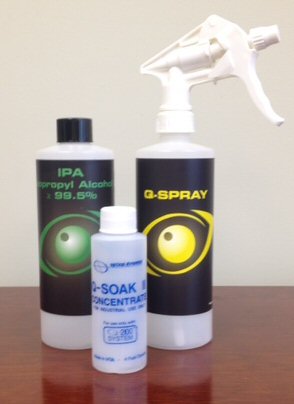So as a staff member, why would I want to cast lenses?
Job security: Ever think it’d be easier to just call a lab and have the lenses made? It is easy. In fact it’s so easy that pretty much anyone can do it. Making lenses requires a little more effort, but it also makes you an integral part of the transaction. The person that makes the lenses is harder to do without than the person that orders them. Making lenses in-house also makes the practice you work for more profitable!
It’s pretty cool:  Do you ever think about the direct output of your efforts helping people see? You’re making something that improves their lives. You’re not just an order taker and delivery box. Some stores can’t even tell you what kind of lenses they’re selling. The corporate office or lab decides that for them and doesn’t feel the need to tell customers. If you make the lenses you’ll know more about how they behave and how they should be used. You become a more important part of your customers’ lives.
Do you ever think about the direct output of your efforts helping people see? You’re making something that improves their lives. You’re not just an order taker and delivery box. Some stores can’t even tell you what kind of lenses they’re selling. The corporate office or lab decides that for them and doesn’t feel the need to tell customers. If you make the lenses you’ll know more about how they behave and how they should be used. You become a more important part of your customers’ lives.
Keep it local: With economic worries and political unrest around the globe, more people are deciding they’d rather spend their time and money at local businesses. Let your customers know you’re actually MAKING their lenses at your store on equipment that’s made in the USA. If you need something out of range, our lab can probably surface it for you and it’ll still be made in the USA (we cast our own blanks in Louisville, KY and surface them in the same lab).
Differentiate yourself and the business: Remember earlier when we were talking about how easy it is to phone an order in? With Internet eyeglass retailers growing, the consumer can easily “phone in” a prescription too. It’s important to give the customer something they can’t get online, so they’ll want to come to your store. Whether it’s a quick turnaround, intimate knowledge of lenses and materials, or the fact that you’re going to personally make the lenses for the user, you have the opportunity to give your customers something a little more special. There are still lots of people that value a personal touch and want to build relationships with the businesses they frequent. Don’t underestimate the importance of those parts of the transaction.
And remember Casters Do it Better!


